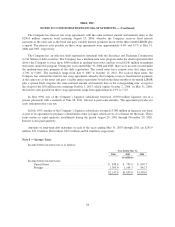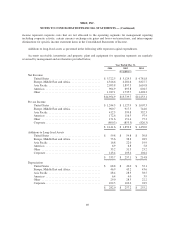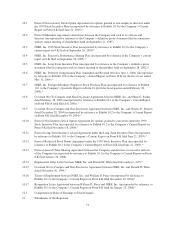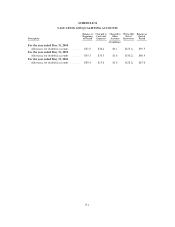Nike 2006 Annual Report Download - page 67
Download and view the complete annual report
Please find page 67 of the 2006 Nike annual report below. You can navigate through the pages in the report by either clicking on the pages listed below, or by using the keyword search tool below to find specific information within the annual report.NIKE, INC.
NOTES TO CONSOLIDATED FINANCIAL STATEMENTS — (Continued)
Cash Flow Hedges
The purpose of the Company’s foreign currency hedging activities is to protect the Company from the risk
that the eventual cash flows resulting from transactions in foreign currencies, including revenues, product costs,
selling and administrative expenses, investments in U.S. dollar-denominated available-for-sale debt securities
and intercompany transactions, including intercompany borrowings, will be adversely affected by changes in
exchange rates. It is the Company’s policy to utilize derivatives to reduce foreign exchange risks where internal
netting strategies cannot be effectively employed.
Derivatives used by the Company to hedge foreign currency exchange risks are forward exchange contracts,
options and cross-currency swaps. The cross-currency swaps are used to hedge foreign currency denominated
payments related to intercompany loan agreements. There are currently no cross-currency swaps outstanding.
Hedged transactions are denominated primarily in euros, Japanese yen, Korean won, Canadian dollars and
Mexican pesos. The Company hedges up to 100% of anticipated exposures typically twelve months in advance
but has hedged as much as 32 months in advance. When intercompany loans are hedged, it is typically for their
expected duration.
Substantially all foreign currency derivatives outstanding as of May 31, 2006 and 2005 qualify for and are
designated as foreign-currency cash flow hedges, including those hedging foreign currency denominated firm
commitments.
Changes in fair values of outstanding cash flow hedge derivatives, except the ineffective portion, are
recorded in other comprehensive income, until net income is affected by the variability of cash flows of the
hedged transaction. In most cases amounts recorded in other comprehensive income will be released to net
income some time after the maturity of the related derivative. The consolidated statement of income
classification of effective hedge results is the same as that of the underlying exposure. Results of hedges of
revenue and product costs are recorded in revenue and cost of sales, respectively, when the underlying hedged
transaction affects net income. Results of hedges of selling and administrative expense are recorded together with
those costs when the related expense is recorded. Results of hedges of anticipated purchases and sales of U.S.
dollar-denominated available-for-sale securities are recorded in other expense, net when the securities are sold.
Results of hedges of anticipated intercompany transactions are recorded in other expense, net when the
transaction occurs. Hedges of recorded balance sheet positions are recorded in other expense, net currently
together with the transaction gain or loss from the hedged balance sheet position. Net foreign currency
transaction gains and losses, which includes hedge results captured in revenues, cost of sales, selling and
administrative expense and other expense, net, were a $49.9 million gain, a $217.8 million loss, and a $304.3
million loss for the years ended May 31, 2006, 2005, and 2004, respectively.
Premiums paid on options are initially recorded as deferred charges. The Company assesses effectiveness on
options based on the total cash flows method and records total changes in the options’ fair value to other
comprehensive income to the degree they are effective.
As of May 31, 2006, $39.0 million of deferred net losses (net of tax) on both outstanding and matured derivatives
accumulated in other comprehensive income are expected to be reclassified to net income during the next twelve
months as a result of underlying hedged transactions also being recorded in net income. Actual amounts ultimately
reclassified to net income are dependent on the exchange rates in effect when derivative contracts that are currently
outstanding mature. As of May 31, 2006, the maximum term over which the Company is hedging exposures to the
variability of cash flows for all forecasted and recorded transactions is 18 months.
The Company formally assesses, both at a hedge’s inception and on an ongoing basis, whether the
derivatives that are used in the hedging transaction have been highly effective in offsetting changes in the cash
66
























